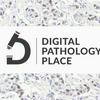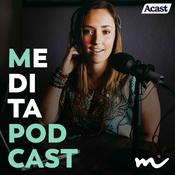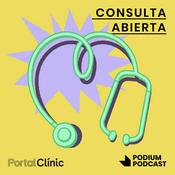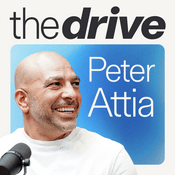180 episodios

180: Digital Pathology Recap 2025
31/12/2025 | 23 min
Send us a textWhat really changed in digital pathology this year—and what still needs work? As we close out 2025 and step into 2026, I wanted to pause, reflect, and share what I’ve seen shift from theory to real-world practice across labs, conferences, and clinical workflows.I look back at the most meaningful developments in digital pathology and AI in 2025—from wider adoption of primary diagnosis on digital slides to more grounded, evidence-driven use of AI tools. We’ve moved past hype and pilots and started asking harder questions about validation, workflow integration, regulation, and trust.I also share what I believe matters most as we move into 2026: building real-world evidence, upskilling pathologists, and focusing on tools that genuinely support patient care rather than distract from it.This episode is for anyone navigating change in pathology and wondering where to invest their time, energy, and curiosity next.Episode Highlights:[00:00–02:10] Why 2025 marked a turning point for digital pathology adoption[02:10–05:40] From pilot projects to clinical workflows: what actually changed[05:40–08:30] How AI usage shifted toward triage, quantification, and decision support[08:30–11:45] Why validation and real-world evidence became central topics[11:45–14:20] The growing role of pathologists in AI governance and quality assurance[14:20–17:10] Lessons from conferences, labs, and conversations worldwide[17:10–20:00] What I expect to see more of in 2026—and what I hope we leave behindKey Takeaways:Digital pathology is no longer experimental—it’s becoming routine in more labs.AI tools are shifting from novelty to practical clinical support.Validation, regulation, and workflow fit matter more than algorithm performance alone.Training and continuous learning are now essential career components for pathologists.2026 will reward teams that test, measure, and iterate thoughtfully.Resources MentionedDigital Pathology Place – education, podcasts, and community 2025 CONFERENCE insights and real-world lab experiences Support the showGet the "Digital Pathology 101" FREE E-book and join us!

179: How is the BigPicture Project using Foundation Models and AI in Computational Pathology?
17/12/2025 | 1 h 6 min
Send us a textWhat if the biggest breakthrough in pathology AI isn’t a new algorithm—but finally sharing the data we already have?In this episode, I’m joined by Jeroen van der Laak and Julie Boisclair from the IMI BigPicture consortium, a European public-private initiative building one of the world’s largest digital pathology image repositories. The goal isn’t to create a single AI model—but to enable thousands by making high-quality, legally compliant data accessible at scale.We unpack what it really takes to build a 3-million-slide repository across 44 partners, why GDPR and data-sharing agreements delayed progress by 18 months, and how sustainability, trust, and collaboration are just as critical as technology. This conversation is about the unglamorous—but essential—work of building infrastructure that will shape pathology AI for decades.⏱️ Highlights with Timestamps[00:00–01:40] Why BigPicture focuses on data—not algorithms[01:40–03:16] Scope of the project: 44 partners, 15–18 countries, 3M images[03:16–06:20] The 18-month delay caused by legal frameworks and GDPR[06:20–11:52] Extracting data from heterogeneous lab infrastructures[11:52–13:38] Current status: 115,000 slides uploaded and growing[13:38–18:39] Why LLMs and foundation models make curated data more valuable than ever[18:39–23:49] Industry collaboration and shared negotiating power[23:49–28:06] Data access models and governance after project independence[28:06–31:59] Sustainability plans and nonprofit foundation model[37:02–43:18] Tools developed: DICOMizer, artifact detection AI, image registration📚 Resources from This EpisodeIMI BigPicture ConsortiumGDPR & Data Sharing Agreements (DSA)DICOMizer & SEND metadata toolsArtifact detection AI for slide QCEuropean AI Factories initiativeSupport the showGet the "Digital Pathology 101" FREE E-book and join us!

178: Live from London: Essential Digital Pathology & AI Insights 2025
11/12/2025 | 40 min
Send us a textWhat if the biggest transformation in digital pathology this year had nothing to do with new hardware—and everything to do with how we think about value, workflow, and readiness?In this year-end recap livestream from the 11th Digital Pathology & AI Congress in London, I break down what truly mattered in 2025. Instead of focusing on buzzwords or hype cycles, this episode highlights the practical advances shaping diagnostics, patient care, and drug development—and the mindset shift our field must embrace to move forward.Digital pathology is no longer “early adoption.” It’s becoming essential infrastructure. And yet the biggest barrier isn’t scanners or algorithms—it’s the knowledge and confidence needed to use them well.Key Highlights & Timestamps0:00 — Setting the Stage from LondonAn overview of the forces that shaped digital pathology in 2025: workflow integration, clinical readiness, and the move from theory to operational reality.1:45 — Leica’s Expanded Portfolio & FDA-Cleared CollaborationsA look at Leica’s updated scanner lineup and co-developed, FDA-cleared solutions with Indicollabs. These launches reflect a broader industry trend toward highly specialized, clinically validated digital tools designed for end-to-end workflows.4:12 — The Acceleration of Companion DiagnosticsFrom Artera’s de novo–approved prostate prognostic test to AstraZeneca’s TROP2 scoring efforts, 2025 pushed computational pathology directly into therapeutic decision-making.6:20 — Why Workflow Integration Became the Theme of 2025Partnerships like BioCare + Hamamatsu + Visgen and Zeiss + MindPeak show where the field is heading: full-stack solutions, not isolated tools. Labs want interoperability, reliability, and simplified digital workflows.9:10 — Adoption Challenges: ROI, Education & AI UncertaintyWe explore the realities slowing digital transformation: – ROI is real, but requires workflow change – AI anxiety persists among clinicians and patients – Education is still the strongest driver of adoption12:00 — 2025’s Innovation HighlightsBreakthroughs shaping the next phase of digital pathology include: – emerging agentic AI platforms– voice-enabled image management systems– improved multiplexing technologies like Hamamatsu’s Moxiplex15:40 — The Growing Intersection of Pathology & GenomicsAI models predicting genomic alterations from H&E images gained traction, especially for cases with minimal tissue. Tempus acquiring Paige signals the deepening connection between digital workflows and molecular data.18:30 — What 2026 Will RequirePriorities for the coming year include: – building agentic AI solutions capable of real workflow orchestration – strengthening validation and QC – sharing real-world deployment case studies – expanding training and hands-on learningRESOURCES:1. The Lucerne Toolbox 3: digital health and artificial intelligence to optimise the patient journey in early breast cancer-a multidisciplinary consensus2. Artificial intelligence (AI) molecular analysis tool assists in rapid treatment decision in lung cancer: a case reportSupport the showGet the "Digital Pathology 101" FREE E-book and join us!

177: From Curiosity to Confidence in Digital Pathology
10/12/2025 | 19 min
Send us a textHave you ever thought, “Digital pathology sounds amazing, but without a scanner, what’s the point of learning it now?” If so, this episode will change how you see your role in the future of pathology.In this talk, I challenge one of the most persistent myths in our field: the belief that you need expensive hardware before you can begin your digital pathology journey. Through personal experience and the remarkable story of another pathologist who started with even less, I show why knowledge—not infrastructure—is what truly opens doors.Highlights and Key Themes0:00 – The Limiting BeliefI open with the core misconception I hear from pathologists worldwide: “I need a scanner before I can start.” I explain why hesitation, not lack of equipment, is the real barrier—and why waiting for perfect conditions keeps many people stuck.2:24 – My Early Digital Pathology StoryI describe my residency in 2013, when a single scanner was “off limits” to trainees. Faced with a research project requiring consistent cell counting, I improvised using a microscope camera and Microsoft Paint. It wasn’t sophisticated, but it was digital, consistent, and reproducible. This experience taught me a foundational lesson: if you can measure something, measure it; don’t rely on visual estimation.7:01 – How This Led to My First Digital Pathology JobThat basic Paint-and-dots project became my gateway to working at Definiens (now part of AstraZeneca). I wasn’t hired for computational expertise; I was hired because I understood tissue, biology, and the value of quantifying what we see. Working alongside image analysis scientists showed me the exponential power of combining tissue knowledge with computational tools.10:03 – Dr. Talat Zehra’s StoryI share the inspiring journey of Dr. Talat Zehra from Karachi, Pakistan, who began with no access to scanners and only a microscope camera. During COVID shutdowns, she taught herself the foundations of digital pathology, joined global organizations, conducted a nationwide survey, and contacted AI vendors for access to platforms. After many rejections, one vendor offered a trial account. In just six weeks, she completed three AI projects using microscope camera images—each one published in a peer-reviewed journal. Her story highlights a universal truth: starting with curiosity and persistence matters far more than having perfect tools.14:14 – Two Paths After a ConferenceI explain the difference between the “forgetting loop” and the “learning path.” Many attendees leave inspired but slip back into routine. Others commit to one consistent learning habit—journal clubs, vendor webinars, DigiPath Digest sessions—and return a year later with clarity, confidence, and momentum. These individuals become the people others seek out for guidance in digital pathology.18:04 – Where to BeginYou don’t need a scanner or an institutional budget to start. What you need is structured knowledge. I introduce my book, Digital Pathology One on One, and encourage listeners to choose one learning habit to build on after the episode. The only wrong choice is choosing nothing.19:06 – Final MessageKnowledge drives adoption, not infrastructure.Scanners, AI tools, and computational platforms already exist. What’s missing are people who understand how to interpret tissue digitally, collaborate with computational teams, and bridge biology with technology. You haveSupport the showGet the "Digital Pathology 101" FREE E-book and join us!

176: Can AI Protect Patients? Forensics, Pathomics & Breast Cancer Insights
05/12/2025 | 28 min
Send us a textWhat happens when AI becomes powerful enough to diagnose—not just one disease, but entire fields of medicine at once? In this episode of DigiPath Digest #33, I break down four new PubMed abstracts shaping the future of digital pathology, clinical AI integration, federated learning, and multidisciplinary cancer care. Across every study, one message is clear: AI is accelerating, but human oversight defines its safe adoption.Below are the full timestamps, key insights, and referenced research to help you explore each topic more deeply.TIMESTAMPS & HIGHLIGHTS0:00 — Welcome & Opening Question How far can AI safely scale across medicine—and where must humans stay in control?4:10 — AI in Forensic Medicine: Accuracy Meets Ethical LimitsBased on a systematic review, we discuss:AI advances in personal identification, pathology, toxicology, radiology, anthropology.Benefits: reduced diagnostic error, faster case resolution.Challenges: data diversity gaps, limited validation, lack of ethical frameworks. 📌 Source: PubMed abstract on AI in forensic disciplines10:55 — Confocal Endomicroscopy + AI for Pancreatic CystsResearchers trained a deep model on 291,045 endomicroscopy frames to detect papillary and vascular structures in IPMNs:70% faster review timeMore consistent structure identificationA step toward scalable “optical biopsy” workflows 📌 Source: IPMN / confocal endomicroscopy AI abstract16:40 — Federated Learning in Computational PathologyA comprehensive review of FL for:Tissue segmentationWhole-slide image classificationClinical outcome prediction Key takeaway: FL can match or outperform centralized training—without sharing patient data—yet still struggles with heterogeneity, interoperability, and standardization. 📌 Source: Federated learning review22:15 — The Lucerne Toolbox 3: A Digital Health Roadmap for Early Breast CancerA global consortium of 112 experts identified 15 high-impact knowledge gaps and proposed 13 trial designs to integrate AI across early breast cancer care:AI-based mammography screeningPersonalized screening strategiesDigital knowledge databasesAI-driven treatment optimizationDigitally delivered follow-up & supportive care 📌 Source: The Lucerne Toolbox 3 (Lancet Oncology)28:50 — Big Picture: AI Expands What’s Possible—but Humans Define What’s AcceptableWe close with the essential takeaway echoed across all four publications:AI is getting smarter, faster, and more integrated—but clinical responsibility, validation, transparency, and multidisciplinary alignment remain irreplaceable.STUDIES DISCUSSED AI in Forensics — systematic review examining applications & ethical barriersConfocal Endomicroscopy + AI for IPMN — hiSupport the showGet the "Digital Pathology 101" FREE E-book and join us!
Más podcasts de Salud y forma física
Podcasts a la moda de Salud y forma física
Acerca de Digital Pathology Podcast
Escucha Digital Pathology Podcast, On Purpose with Jay Shetty y muchos más podcasts de todo el mundo con la aplicación de radio.es

Descarga la app gratuita: radio.es
- Añadir radios y podcasts a favoritos
- Transmisión por Wi-Fi y Bluetooth
- Carplay & Android Auto compatible
- Muchas otras funciones de la app
Descarga la app gratuita: radio.es
- Añadir radios y podcasts a favoritos
- Transmisión por Wi-Fi y Bluetooth
- Carplay & Android Auto compatible
- Muchas otras funciones de la app


Digital Pathology Podcast
Descarga la app,
Escucha.







































